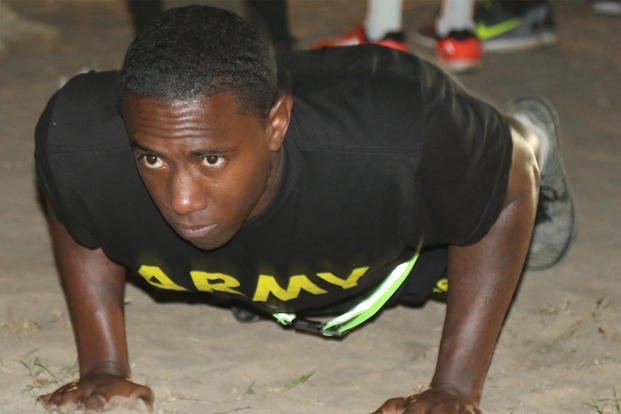Most Americans are not physically active enough to maintain basic health. In fact, more than 60% of U.S. adults do not exercise the minimum recommended amount, and 25% are completely inactive.
Don't feel bad if you are not currently in the 15% crowd that exercises regularly. Life quite often gets in the way of our personal plans. The good news is that you do not have to continue down the road of inactivity.
If you are looking to get in shape and improve your overall health, creating a workout plan does not have to be complicated. In fact, I would not even call it "creating a workout plan." Just start by scheduling time with yourself, even if it's only 10 to 15 minutes a day as you get started.
It is important to make an appointment with yourself because "if it is not in the schedule, it does not exist" in your day. The checklist below will walk you through the steps of creating an extra activity habit in your day so you can start making progress toward your fitness goals.
Most of us need to move more and eat better. We do not move enough, and we eat too much. Statistics show that 42% of Americans are obese and an additional 30% are overweight. Slightly increasing your activity and exercising regularly is essential to your health and will make your life easier.
Regular exercise helps prevent chronic diseases such as stroke, heart disease and diabetes. It also helps you manage stress and maintain a healthy weight. Exercise can also boost your mood and energy levels by helping you ward off fatigue, poor sleep quality, poor concentration and depression. In short, it's a great way to stay mentally and physically healthy. (Information from CDC Obesity Facts.)
The Centers for Disease Control and Prevention (CDC) recommends that adults get at least 150 minutes of moderate-intensity aerobic exercise (such as brisk walking) or 75 minutes of vigorous-intensity aerobic exercise (such as running or jogging) each week.
You can also do more non-impact cardio activity if walking or jogging is too painful. Biking, rowing, elliptical, swimming and water aerobics are great activities to get you moving with less impact on the joints as you begin to lose weight.
A great recommendation is to do a 10- to 15-minute walk or bike prior to or after each meal of the day. There is no reason to feel overwhelmed by the thought of starting an exercise program. You may be worried that you won't know what you're doing, or that you won't be able to stick with it.
At this point of the journey, keep it simple and just walk more and drink more water. If you like the progress you are making and want to make changes, then you can join a gym, start weight training, or take a group exercise class. You do not have to do this alone.
The good news is that you don't have to worry about getting it "right" or having a perfect plan. Just start small and work your way up.
Here are some tips to get you started:
Set a realistic time goal
Setting a goal of 10 to 15 minutes of physical activity a day is a great start. For most, being consistent is the biggest challenge as finding an hour to hit the gym is often difficult in our busy schedules. Once you have established the 10-minute-a-day habit, pump up those numbers to 15 to 20 minutes a day. You will find a steady progression of time done each day is a better goal than starting off with a big goal of losing 50 pounds.
Track your progress
Tracking your progress will help you stay motivated and be consistent with your workout plan. It will also give you an idea of where you need to improve. Tracking daily time and consistency is easy. Tracking 1 to 2 lbs. of weight loss each week is considered a longer-term goal. Consistency is key to your success, and you can track this daily.
Find a buddy
Having an exercise partner can make it easier to stick with your plan and stay motivated. Whether it's a friend, family member or coworker, find someone who can keep you accountable and motivated. You can also join a fitness class or activity group to stay on track.
Don't forget to rest and unwind
Exercise (even walking when first starting) can be hard on your body, so it's important to get enough rest and recovery time. You may want to start out walking every other day at first, then build up to daily walking exercise.
Take it slow and steady
Don't go too hard too soon. Take your time and gradually increase the intensity of your workouts as you get stronger and more fit.
By following these tips, you can start an exercise program that works for you. You don't have to worry about whether you're doing it "right." Just focus on getting moving and enjoy the benefits that regular exercise can bring. The best way to start is by simply going for a walk or a bike ride. Just 10 minutes a day can make a world of difference. After a few weeks, you may feel motivated to do more, and that's when you can start setting more tangible goals.
-- Stew Smith is a former Navy SEAL and fitness author certified as a Strength and Conditioning Specialist (CSCS) with the National Strength and Conditioning Association. Visit his Fitness eBook store if you're looking to start a workout program to create a healthy lifestyle. Send your fitness questions to stew@stewsmith.com.
Want to Learn More About Military Life?
Whether you're thinking of joining the military, looking for fitness and basic training tips, or keeping up with military life and benefits, Military.com has you covered. Subscribe to Military.com to have military news, updates and resources delivered directly to your inbox.


















